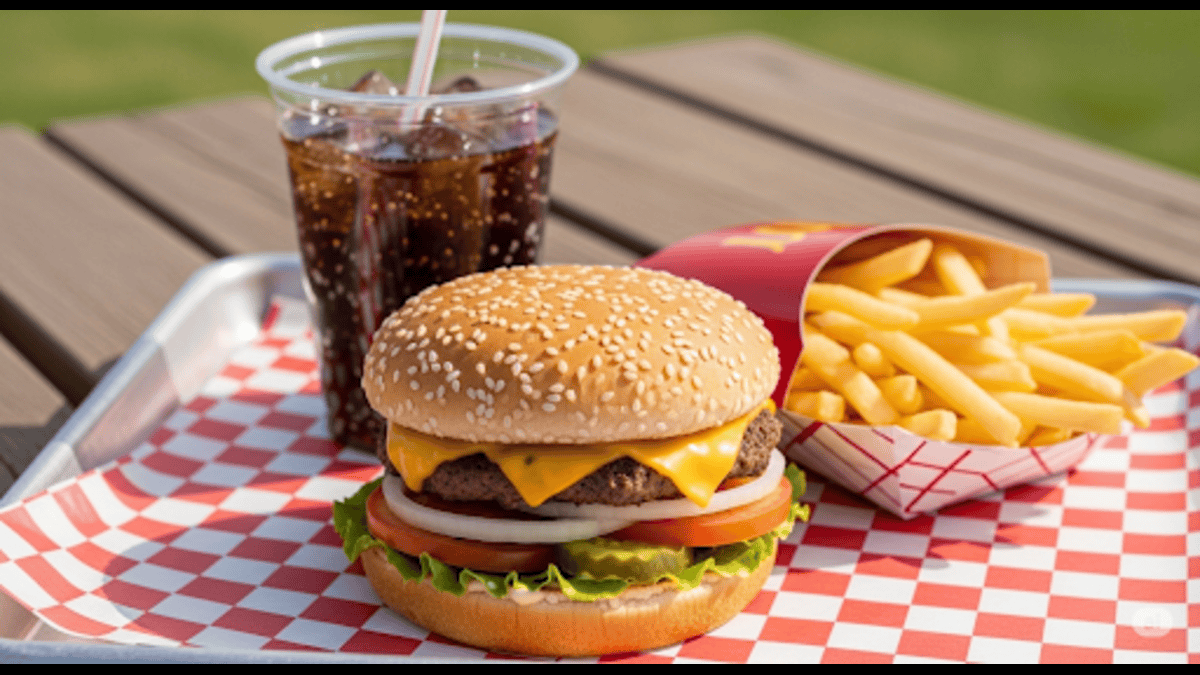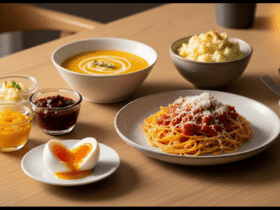Americanized food is a culinary phenomenon where traditional dishes from other cultures are adapted to suit American tastes, ingredients, and dining habits. From sweetened versions of Asian classics to oversized portions of Italian favorites, Americanized food has become a staple of the U.S. food scene—both celebrated and criticized.
But what exactly does it mean when food is “Americanized”? And how does it differ from authentic global cuisine? Let’s explore the world of Americanized food, why it exists, what it looks like, and the debates surrounding it.
What Is Americanized Food?
Americanized food refers to traditional international dishes that have been modified—sometimes subtly, sometimes drastically—to cater to American palates and preferences. These adaptations often include:
- Heavier use of sugar, salt, or cheese
- Larger portion sizes
- Simpler or fewer spices
- More processed or fast-food-style preparation
- Ingredients swapped to match what’s commonly found in U.S. grocery stores
While these changes make foreign cuisine more approachable to mainstream American diners, they often come at the cost of authenticity.
Examples of Americanized Foods
Here are some well-known dishes that have been Americanized:
1. General Tso’s Chicken (Chinese-American)
A sweet, deep-fried chicken dish with a sticky sauce—this doesn’t exist in traditional Chinese cuisine but is a popular favorite in American Chinese restaurants.
2. California Roll (Japanese-American)
A sushi roll featuring avocado and imitation crab, made for those unfamiliar with raw fish. It’s more common in the U.S. than in Japan.
3. Spaghetti and Meatballs (Italian-American)
In Italy, pasta and meatballs are typically served separately. This hearty combo is an American creation inspired by Italian flavors.
4. Taco Bell-style Tacos (Mexican-American)
Crunchy shells filled with seasoned beef, shredded cheese, and lettuce are far from traditional Mexican street tacos, which usually feature soft tortillas and simple ingredients.
5. Fortune Cookies (Chinese-American)
Despite being served in Chinese restaurants across the U.S., fortune cookies were actually invented in California and are rarely found in China.
Why Does Food Get Americanized?
There are several reasons why traditional dishes get a U.S. makeover:
- Cultural accessibility: Making unfamiliar food more appealing to mainstream diners
- Ingredient availability: Some authentic ingredients aren’t readily found in the U.S.
- Economic reasons: Dishes are often simplified for faster, cheaper production
- Restaurant branding: Dishes are renamed or redesigned to attract more customers
It’s a blend of innovation, adaptation, and sometimes, marketing.
Is Americanized Food a Bad Thing?
Not necessarily. While purists might argue that it dilutes culture, others believe it’s a form of culinary evolution. Americanized dishes have introduced millions to international flavors, and many immigrants adapted recipes to thrive in a new land.
The key is awareness—knowing the difference between authentic and Americanized versions and appreciating both for what they are.
FAQs About Americanized Food
Q1: Is Americanized food the same as fusion food?
A: Not quite. Fusion food blends elements from different cuisines to create something new. Americanized food, on the other hand, typically takes a dish from one culture and alters it to match American tastes.
Q2: Why are Americanized foods often sweeter or saltier?
A: American taste preferences often lean toward bold, salty, and sweet flavors. Dishes are adjusted accordingly, sometimes to an extreme, to appeal to the average U.S. diner.
Q3: Are Americanized versions of ethnic food offensive?
A: It depends on intent and context. While some view it as cultural appreciation and adaptation, others feel it disrespects or misrepresents their heritage. The key is to respect and acknowledge the roots of a dish.
Q4: Can Americanized food still be delicious?
A: Absolutely! Many Americanized dishes are beloved comfort foods in their own right. They may not be “authentic,” but they can still be flavorful and enjoyable.
Q5: How can I tell if a dish is Americanized?
A: Look for signs like:
- Unusual ingredient combinations not found in traditional recipes
- Overuse of cheese, sugar, or processed sauces
- Dishes that are significantly larger than what’s served in the country of origin
- Menu items that don’t exist in the cuisine’s home country
Q6: Where can I try more authentic versions of global dishes?
A: Check out:
- Family-owned ethnic restaurants
- Specialty grocery stores
- Cultural food festivals
- Cookbooks or cooking classes led by people from that culture
Q7: Are there Americanized foods from every culture?
A: Yes, virtually every major immigrant cuisine in the U.S.—Chinese, Mexican, Italian, Thai, Indian, Korean, and more—has some Americanized versions that have taken root.
Final Thoughts
Americanized food is a fascinating reflection of how cultures mix, evolve, and survive in new environments. While it may not always reflect traditional recipes, it tells a unique story—of immigration, adaptation, and the ever-changing American palate.
Whether you prefer authentic recipes or enjoy the cheesy, crispy charm of Americanized takes, there’s room at the table for both. The key is to celebrate diversity while honoring culinary origins.
















Got a Questions?
Find us on Socials or Contact us and we’ll get back to you as soon as possible.